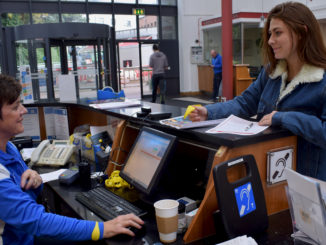
[dropcap]The[/dropcap] opening scene of BBC’s Peaky Blinders is exactly as you would expect. The cinematic techniques ensure you are greeted with the very embodiment of Birmingham grime in the 1920s. You see smoke, violence, old-fashioned newspaper mastheads and, of course, the peaky caps.
All of the elements tie in together perfectly to reflect realism of a certain period in history. Nearly every scene that you see has someone smoking a cigarette and the costumes of all the characters are beautifully charismatic.
Ironically, what works the best when creating this idea of 1920’s Birmingham is the use of contemporary music with a period drama. This is particularly visibly with Nick Cave’s opening sequence of ‘Red Right Hand’. The staccato beats, combined with the deep voice of Nick Cave creates an almost ominous vibe which is entirely befitting for the dramatic Peaky Blinders.
In an interview with Vice, Cillian Murphy, who plays Thomas Shelby in the hit show, revealed that Nick Cave actually agreed to use his music in the show, only after watching some of the scenes. The importance of music when crafting a narrative in tv is often overlooked. However, the time and effort that the creators and directors of Peaky Blinders put into selecting the music for this show really pays dividends.
The entire soundtrack encapsulates the mood of gangsters in Birmingham, despite the majority of music being from the last 10 to 15 years. Arctic Monkeys, The White Stripes and Lord Huron are some of the other modern artists that really aid the creation of the period in which the show was set.
Peaky Blinders isn’t the only show which utilises modern music to evoke an antiquated feeling or emotion from its viewers. Django Unchained, A Knight’s Tale and The Great Gatsby also benefited from the use of a progressive soundtrack. The soulful words of Lana Del Rey when singing ‘Young & Beautiful’ not only captures the tone of the music but also captures the feelings of some of the characters within the adaptation of F. Scott Fitzgerald’s novel.
Baz Luhrmann, the director of the 2013 Great Gatsby movie, took a risky chance when including Jay Z in the movie’s soundtrack but it definitely paid off. Rap music operates under a lot of the same social stigmas that jazz music had in the 1920s and so it takes a modern twist on the rebellion that jazz artists felt at the time. Making the soundtrack fresh allows the storyline and script to be refreshed too. It also makes sense to use a type of music that flaunts wealth and indulgence as a kind of public facade in a movie about a man who flaunts wealth and indulgence in the same manner.
The inclusion of such a diverse range of modern artists also pays off in the resulting film. From The XX to Beyonce, the variety in tempo, style and soul really accentuates the idiosyncrasies of the characters.
If done well, contemporary music can be beneficial to the story creation in a period drama. However, sometimes the risks don’t pay off and you’re left with cinema goers laughing out loud like they did at the Wu Tang Clan’s featured single in The Man with the Iron Fists.



